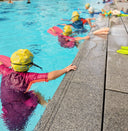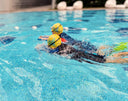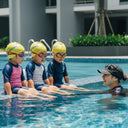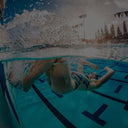To understand our approach, you first need to know a little secret about how a child's body develops. Think of it like this: our muscles have two main types of fibers. "Slow-twitch" fibers are for endurance (like a marathon runner), and "fast-twitch" fibers are for explosive speed (like a sprinter).
Modern sports science, through the Long-Term Athlete Development (LTAD) model, has identified critical "windows of trainability." The research is clear: for children (roughly ages 6-9), the window for developing the nervous system and hardwiring those fast-twitch "sprinter" fibers is wide open. The window for training endurance, on the other hand, opens much later, around puberty.
This scientific fact is the "why" behind our entire method. You will never see our young swimmers doing long, sloppy 50m laps. Our syllabus is built on short-distance bursts and purposeful "speed sets." This type of training specifically targets and develops those fast-twitch fibers, teaching the brain and muscles to communicate with explosive speed.
Conversely, forcing a young child into long-distance swims trains their slow-twitch fibers at the wrong time and, worse, causes fatigue. A tired child defaults to "survival mode," ingraining bad habits (like a dropped elbow) that take months to correct. Our approach ensures every repetition is perfect, building correct muscle memory and capitalizing on your child's natural developmental window for speed.












